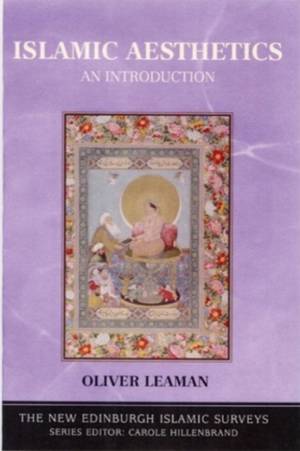
- Afhalen na 1 uur in een winkel met voorraad
- Gratis thuislevering in België vanaf € 30
- Ruim aanbod met 7 miljoen producten
- Afhalen na 1 uur in een winkel met voorraad
- Gratis thuislevering in België vanaf € 30
- Ruim aanbod met 7 miljoen producten
Zoeken
€ 162,95
+ 325 punten
Uitvoering
Omschrijving
Is there something unique about Islamic art? This book argues that there is not - that Islam does not play an leading role in the aesthetic judgements that we should make about objects created in the Islamic world.It is often argued that a very special sort of consciousness went into creating Islamic art, that it is very different from other forms of art, that Muslims are not allowed to portray human beings in their art, and that calligraphy is the supreme Islamic art form. Oliver Leaman challenges all these ideas, showing them to be misguided. Instead he suggests that the sort of criteria we should apply to Islamic art are identical to the criteria applicable to art in general, and that the attempt to put Islamic art into a special category is a result of orientalismKey Features: *Criticises the influence of Sufism on Islamic aesthetics*Deals with issues arising in painting, calligraphy, architecture, gardens, literature, films, and music*Pays close attention to the Qur'an*Argument includes examples from history, art, philosophy, theology and the artefacts of the Islamic worldThe reader is invited to view Islamic art as no more and no less than ordinary art, neither better nor worse than anything else that counts as art. It follows that there are no special techniques required in Islamic aesthetics as compared with any other form of aesthetics.
Specificaties
Betrokkenen
- Auteur(s):
- Uitgeverij:
Inhoud
- Aantal bladzijden:
- 216
- Taal:
- Engels
- Reeks:
Eigenschappen
- Productcode (EAN):
- 9780748617340
- Verschijningsdatum:
- 21/05/2004
- Uitvoering:
- Hardcover
- Formaat:
- Genaaid
- Afmetingen:
- 156 mm x 234 mm
- Gewicht:
- 462 g

Alleen bij Standaard Boekhandel
+ 325 punten op je klantenkaart van Standaard Boekhandel
Beoordelingen
We publiceren alleen reviews die voldoen aan de voorwaarden voor reviews. Bekijk onze voorwaarden voor reviews.











